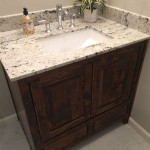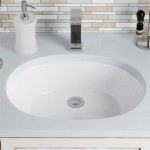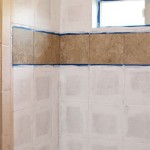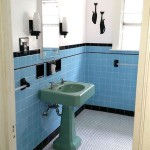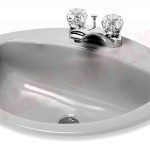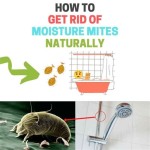How To Clean Chrome Bathroom Fixtures
Chrome bathroom fixtures, renowned for their sleek aesthetic and durability, are a popular choice in modern bathrooms. However, their shiny surface is also prone to displaying water spots, soap scum, and mineral deposits, requiring regular cleaning and maintenance to retain their luster. Neglecting these fixtures can lead to stubborn stains and a diminished appearance. Therefore, understanding the proper cleaning techniques and preventative measures is essential for preserving the beauty and longevity of chrome bathroom fixtures.
The frequency with which chrome fixtures require cleaning depends on several factors, including water hardness, usage levels, and ventilation. In areas with hard water, mineral deposits tend to accumulate more rapidly. Similarly, frequently used fixtures are more susceptible to soap scum buildup. Poor ventilation contributes to moisture retention, further exacerbating the problem. As a general guideline, wiping down chrome fixtures after each use and performing a more thorough cleaning weekly is advisable. This proactive approach prevents the accumulation of stubborn stains and simplifies the cleaning process.
The choice of cleaning agents is crucial in maintaining the integrity of chrome fixtures. Abrasive cleaners, such as scouring powders and steel wool, can scratch and damage the chrome finish, diminishing its shine and potentially causing irreversible harm. Acidic cleaners, while effective in removing mineral deposits, can also corrode the chrome over time. Therefore, opting for gentle, non-abrasive cleaning solutions is recommended. Effective options include mild dish soap, white vinegar, baking soda, and specialized chrome cleaners.
Gentle Cleaning with Mild Dish Soap
Mild dish soap is an excellent general-purpose cleaner for chrome bathroom fixtures. Its gentle formula effectively removes dirt, grime, and light soap scum without damaging the chrome finish. The process involves mixing a small amount of dish soap with warm water in a bucket or spray bottle. A soft cloth or sponge is then dampened with the soapy solution and used to wipe down the chrome fixtures. Pay particular attention to areas prone to buildup, such as faucets, showerheads, and handles. After cleaning, rinse the fixtures thoroughly with clean water to remove any soap residue. Finally, dry the fixtures with a clean, dry cloth to prevent water spots from forming. This simple cleaning method, when performed regularly, can keep chrome fixtures looking their best.
For areas that are difficult to reach, such as the base of faucets or around showerheads, an old toothbrush can be used to gently scrub away grime and buildup. The soft bristles of the toothbrush can effectively clean crevices without scratching the chrome surface. After scrubbing, rinse the area thoroughly with water and dry it with a cloth.
The type of cloth used for cleaning chrome fixtures also plays a role in maintaining their appearance. Microfiber cloths are particularly effective due to their soft texture and ability to trap dirt and grime. Avoid using abrasive cloths or paper towels, as these can potentially scratch the chrome finish. Regularly cleaning and replacing the cloths used for cleaning chrome fixtures is essential to prevent the spread of bacteria and ensure optimal cleaning performance.
Removing Water Spots and Mineral Deposits with White Vinegar
White vinegar is a natural and effective solution for removing water spots and mineral deposits from chrome bathroom fixtures. Its mild acidity helps dissolve mineral buildup without causing significant damage to the chrome finish. To use white vinegar, create a solution by mixing equal parts white vinegar and water in a spray bottle. Spray the solution onto the affected areas and allow it to sit for several minutes to allow the vinegar to dissolve the mineral deposits. For stubborn deposits, soak a cloth in the vinegar solution and apply it directly to the affected area for a longer period of time, such as 15-20 minutes.
After soaking, scrub the area gently with a soft cloth or sponge. Avoid using abrasive scrubbing pads, as they can scratch the chrome. Rinse the fixtures thoroughly with clean water to remove any vinegar residue. Finally, dry the fixtures with a clean, dry cloth to prevent water spots from reappearing. The distinctive odor of white vinegar may linger for a short period after cleaning, but it will dissipate quickly. Opening a window or turning on the ventilation fan can help expedite the dissipation of the odor.
For showerheads clogged with mineral deposits, a more intensive soaking method may be required. Remove the showerhead, if possible, and submerge it in a container filled with the vinegar solution. Allow it to soak for several hours or even overnight. This extended soaking period allows the vinegar to penetrate and dissolve the mineral deposits more effectively. After soaking, rinse the showerhead thoroughly with water and remove any remaining debris with a toothbrush or small brush. Reinstall the showerhead and test its functionality to ensure that the water flow is restored.
Tackling Stubborn Soap Scum with Baking Soda Paste
Baking soda is a mildly abrasive cleaning agent that can effectively remove stubborn soap scum from chrome bathroom fixtures. It is less abrasive than scouring powders but still provides sufficient cleaning power to tackle difficult stains. To use baking soda, create a paste by mixing it with a small amount of water. The consistency of the paste should be thick enough to adhere to the surface of the fixtures. Apply the paste to the affected areas and allow it to sit for several minutes to soften the soap scum.
After allowing the paste to sit, scrub the area gently with a soft cloth or sponge. Avoid using excessive pressure, as this can potentially scratch the chrome finish. Rinse the fixtures thoroughly with clean water to remove any baking soda residue. Dry the fixtures with a clean, dry cloth to prevent water spots from forming. For particularly stubborn soap scum, repeat the process or try using a combination of baking soda and white vinegar. The reaction between baking soda and vinegar creates a fizzing action that can help loosen and dissolve the soap scum.
When using baking soda on chrome fixtures, it is essential to test it first on an inconspicuous area to ensure that it does not cause any damage or discoloration. While baking soda is generally safe for use on chrome, some finishes may be more sensitive to abrasive cleaning agents. If you notice any adverse effects, discontinue use and opt for a gentler cleaning method.
Specialized chrome cleaners are also available on the market and can be used according to the manufacturer's instructions. These cleaners are specifically formulated to clean and protect chrome surfaces, often containing ingredients that enhance shine and prevent tarnish. However, it is essential to choose a chrome cleaner that is non-abrasive and pH-neutral to avoid damaging the finish.
Regardless of the cleaning method used, it is crucial to avoid using harsh chemicals, such as bleach or ammonia, on chrome bathroom fixtures. These chemicals can corrode the chrome and cause irreversible damage. Always read the labels of cleaning products carefully and follow the manufacturer's instructions. When in doubt, test the cleaner on an inconspicuous area before applying it to the entire fixture.
In addition to regular cleaning, preventative measures can help maintain the appearance of chrome bathroom fixtures and reduce the frequency of cleaning. Wiping down the fixtures after each use can prevent water spots and soap scum from accumulating. Improving ventilation in the bathroom can reduce moisture buildup, which contributes to the formation of mold and mildew. Installing a water softener can reduce the mineral content of the water, minimizing the formation of mineral deposits on fixtures. These preventative measures, combined with regular cleaning, can keep chrome bathroom fixtures looking their best for years to come.
Another preventative measure is to apply a protective coating to the chrome fixtures. Several products are available on the market that create a barrier between the chrome finish and water, soap, and other substances. These coatings can help repel water, prevent water spots, and make cleaning easier. Follow the manufacturer's instructions carefully when applying a protective coating.
Maintaining the shine of chrome bathroom fixtures requires a consistent cleaning routine and the use of appropriate cleaning agents. By following these guidelines, individuals can preserve the beauty and longevity of their chrome fixtures and enjoy a sparkling and hygienic bathroom environment.

How To Clean Chrome Bathroom Fixtures Joyful Homemaking

How To Keep Your Chrome Tapware Clean Designer Bathrooms Plus

How To Prevent Water Spots On Chrome South Georgia Style

Cleaning Hard Water Spots Off Chrome Bathroom Fixtures Quick Easy

Tips For Cleaning The Rust Off Chrome Fixtures Puroclean Of White Marsh

How To Remove Hard Water Stains From Chrome Taps Faucets Cleaning

Keep Your Faucets Shiny With This Little Trick The Creek Line House

How To Clean Chrome Bathroom Fixtures Joyful Homemaking

How To Remove Hard Water Stains From Taps Tiles Faucets Shine Them So Impressive Andrea Jean

Keep Your Faucets Shiny With This Little Trick The Creek Line House

